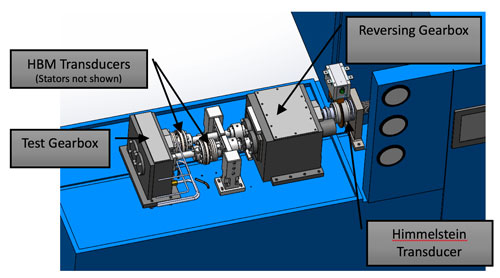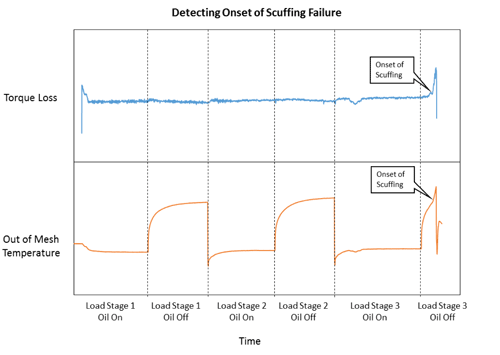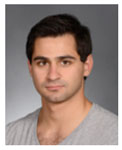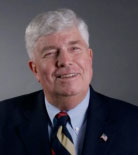Nov 2016 Newsletter - Transmissions Vol 18, 2016
 Vol. 18, 2016
Vol. 18, 2016
Foreward
Here at the Gear Research Institute, as we look ahead, we see much to be excited about. There are new projects to execute, new technologies to investigate, and new leadership to take us forward. But I would also like to take a moment to celebrate the past, and to thank those who brought us here.
The GRI was founded in 1982 as an independent not-for-profit corporation affiliated with the ASME and AGMA and was hosted at the BIRL (Basic Industries Research Laboratory) at Northwestern University. After successfully operating in the Chicago area for 14 years, it was time to make a move. The GRI was looking for a home more aligned with its mission of supporting applied research for the gear industry. After an exhaustive vetting process, the Applied Research Laboratory at the Pennsylvania State University was selected as the future venue, and the GRI moved to ARL/Penn State in 1996. This fall, we are celebrating the 20th Anniversary of the GRI at Penn State. It has been a long and successful partnership. In the past 20 years, the GRI has conducted around $12M of research on behalf of the gearing community, and successfully completed hundreds of applied research projects. Today we have a vibrant Aerospace Bloc with 13 sponsors, and numerous single-client projects. Much credit for the success goes to the past and current staff and leadership of the GRI. I would like to acknowledge the contributions of the following individuals who have provided excellent leadership in the past.
Managing Directors:
Mr. Dale Breen
Dr. Suren Rao
Presidents of the GRI Board:
Dr. Noel Pooler
Mr. Ron Bullock
Mr. Gary Kimmet
Mr. Barney Berlinger
Mr. Bill Bradley
Mr. Sam Haines
Looking to the future, we are expanding our capabilities. In this newsletter, we describe our investigations of oil-off performance of geared systems which are critical to extending gearbox life in loss of lube situations. In the recent past, we have reported on diverse initiatives, ranging from understanding the role of surface finish on gearbox efficiency to Very Long Cycle Fatigue behavior of premium steel alloys. I would also like to highlight initiatives to provide the gear industry with knowledgeable undergraduate and graduate engineers.
A quote from Ben Franklin comes to mind – “Tell me and I forget. Teach me and I remember. Involve me and I learn”. There are many opportunities to get involved: become a corporate or individual member, join an existing Bloc or form a new one, sponsor a project, or support a graduate or undergraduate student. Feel free to drop a quick email to our Managing Director Aaron Isaacson (This email address is being protected from spambots. You need JavaScript enabled to view it.) to learn more.

Avinash Singh
Engineering Group Manager – Advanced Components and Subsystems
Global Transmission and Electrification
General Motors
Research Project
Major aircraft manufacturers and the Department of Defense have initiated projects to extend the “oil-off” performance of gear boxes, so that aircraft can safely land in an accidental “loss of lubricant” situation. Consequently, testing and evaluating the “oil-off” performance of gears has been in significant demand in the last few years. However, unlike other failure modes, oil off failures are characterized by a very rapid and catastrophic destruction of the test gear set, making it extremely difficult to evaluate this aspect of their performance. After several catastrophic failures it was decided that a more sensitive pre-cursor to the impending catastrophic failure was necessary, if we were to ever compare the oil off performance of different gear materials, coatings or lubricants. Figure 1: PC Test Rig Schematic
Figure 1: PC Test Rig Schematic
Figure 1 shows the 3.5 inch center distance, Power re-Circulating gear test rig that is being utilized for several oil off evaluation test projects. These test rigs have been enhanced with additional instrumentation as shown in the schematic. This includes a torque transducer (Himmelstein) to characterize the total power loss in the PC test rig and two torque transducers (HBM) to measure the input and output torques into the test gear box. The torque difference between the input and output transducers is a measure of the torque losses in the test gear box. In addition to these torque transducers several thermocouples are in place on the test rig to monitor lubricant temperatures (not shown). Of particular interest, in this article, is a thermocouple inserted into the test gear box that is placed as close as possible in the “out of mesh” position of the gear mesh, without touching the actual test gears.
Figure 2 shows traces of torque loss and out of mesh thermocouple measurements, as the gear mesh is subjected to increasing loads (load stage 1 to load stage 3), under oil on and oil off conditions. At each load stage the torque losses increase slightly but remain stable until the onset of scuffing. The out of mesh temperature, however, increases when the oil is turned off but reaches a steady state after some time. However, when scuffing is imminent, the out of mesh temperature also spikes in a manner coincident with the spike in the torque loss measurement.
Visual examination of the test gear tooth flanks and many repetitions of this experiment confirms that the two above mentioned parameters are reliable and sensitive pre-cursors to the onset of scuffing, well before catastrophic gear failure occurs. This method is now being used to differentiate the oil off behavior of gears made from various materials and with various lubricants.
Figure 2: Torque and Temperature Measurements
Education and Training
In order to assist with replenishment of the gear industry’s aging work force, the Gear Research Institute has developed a hands on education for students at both the undergraduate and graduate levels. The results of the program are entry level engineers that have been trained in the basics of gearing. This involves incorporating engineering undergraduate students, at the junior/senior level and graduate students in the Institute’s research laboratory while being paid by a grant from the sponsoring industrial entity. Summer internships have also been arranged at the sponsor’s facility, so that the student and the sponsor have an opportunity to assess each other with future employment in mind.
We had our first graduate of this program in the spring of 2013, who then joined John Deere at their Coffeyville, KS facility. A second student selected by John Deere, Byron Stuart, who graduated and joined John Deere at their Waterloo, Iowa facility in August 2014. The third student supported by John Deere, William Jaundalderis, BS Mechanical Engineering, graduated in 2015 but joined the United States Air Force upon graduation. Most recently, David Reed was supported by John Deere and graduated in 2016. John Deere has continued its support of this program and another senior, in Mechanical Engineering, Anthony Angelucci is currently working in our laboratory.

Typically, students get hands on experience by setting up and monitoring gear test equipment with additional training topics such as gear metrology, failure analysis, metallurgical characterization, vibration monitoring for failure detection, statistical analysis of test data and more.
For more information about how you can support a student intern please log in to www.gearresearch.org or contact Aaron Isaacson at 814 865 5832 or This email address is being protected from spambots. You need JavaScript enabled to view it..
News
It is with sadness that we report the untimely passing of Mr. Ron Bullock, Chairman and owner of Bison Gear, St. Charles, IL, on June 9th, 2016. Ron was President of the Gear Research Institute in its early days, from 1996 through 2000 and a member of its Board of Trustees till 2002. He played a very key role in the transition of the Gear Research Institute from Illinois to the Pennsylvania State University. Even after stepping down from the Board he continued a relationship with the Institute as a corporate member of GRI. He will be missed by all at GRI who knew him.

The Gear Research Institute is a non profit corporation. It has contracted with the Applied Research Laboratory of The Pennsylvania State University to conduct its activities, as a sponsor within the Drivetrain Technology Center. The Gear Research Institute is equipped with extensive research capabilities. These include rolling contact fatigue (RCF) testers for low- and high-temperature roller testing, power circulating (PC) gear testers for parallel axis gears with a 4-inch center distance (testers can be modified to accommodate other center distances), single tooth fatigue (STF) testers for spur, helical and spiral bevel gears, and gear tooth impact tester. Extensive metallurgical characterization facilities are also available at Penn State in support of the Gear Research Institute. For further details on our testing capabilities please go to www.gearresearch.org or call Aaron Isaacson, Managing Director, at (814) 865-5832..
